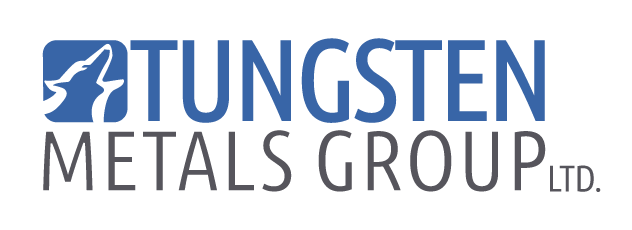Tungsten Metal Set to Take Over Global Industries
Tungsten Metal: The Powerhouse Making a Comeback
Tungsten isn’t your average metal. It’s tough, resilient, and practically laughs in the face of extreme heat. Known for having the highest melting point of any element (a whopping 3,422°C), tungsten has long been used in industrial applications. But here’s the kicker—it’s not just for cutting tools and armor plating anymore. With breakthroughs in aerospace, renewable energy, and defense, tungsten is stepping into the spotlight as a game-changing commodity.
So, what’s driving this sudden interest in tungsten? Let’s break it down.
Why Tungsten is More Important Than Ever
1. The Aerospace Boom
Space exploration isn’t slowing down anytime soon. As missions push deeper into space, engineers need materials that can handle extreme conditions. Enter tungsten.
Used in rocket engine nozzles and structural components
Exceptional heat resistance makes it perfect for high-temperature environments
Expected to play a bigger role in deep-space travel
2. Renewable Energy Innovations
Silicon-based solar panels have ruled the market for years, but researchers are finding that tungsten might be the key to a cheaper, more efficient future.
Stanford University’s tungsten-based solar cells offer a low-cost alternative
Semi-transparent tungsten solar panels could be integrated into windows and buildings
A potential game-changer for urban energy solutions
3. The Growing Demand in Defense & Technology
Tungsten is already a go-to metal for military applications, but with rising global tensions, its demand is only increasing.
Used in armor-piercing projectiles and radiation shielding
Plays a critical role in electronics, from mobile phone vibrators to semiconductors
Essential for high-performance military and tech components
The Market Dynamics: Why Tungsten’s Price Hasn’t Exploded—Yet
Unlike lithium or rare earth metals, tungsten hasn’t seen massive price spikes—at least not recently. But history tells a different story.
A Look at Tungsten’s Price Trends
Prices surged during World War I and the Cold War due to its military importance.
The 2010 commodity boom pushed prices up before the 2016 Fanya Metals Exchange collapse sent them crashing.
Recently, prices have stabilized around US$332.5 per metric tonne unit (mtu), but analysts predict an upward trend.
The China Factor: A Market Monopoly
China dominates tungsten production, churning out over 80% of the global supply (around 63,000 tonnes annually). Other major producers—Vietnam, Russia, and North Korea—collectively contribute only about 7,000 tonnes per year. This monopoly raises concerns about supply security, pushing countries to seek alternative sources.
Key Players Shaping the Tungsten Market
EQ Resources: Expanding Production in Australia & Spain
EQ Resources has made big moves in the tungsten sector with operations at Mt Carbine (Queensland) and Spain’s Saloro mine. Producing around 217,000 mtu annually, their strategic partnerships, including a supply deal with US-based Elmet Technologies, position them as a rising force.
Group 6 Metals: Reviving King Island’s Tungsten Wealth
Formerly King Island Scheelite, Group 6 Metals is focused on restarting Tasmania’s Dolphin Tungsten Mine. Their goal? To hit 200,000 mtu per year—a major boost for Western supply chains.
Almonty Industries: Global Reach, Smart Acquisitions
Almonty operates across Korea, Portugal, and Spain, specializing in revitalizing underperforming mines. Their Sangdong Mine in Korea is poised to become one of the largest tungsten producers outside China, targeting over 2,300 mtu annually.
Tungsten Metals Group: The Ferrotungsten Contender
We are shaking up the market and global supply chain dynamics by focusing on ferrotungsten production. Our Vietnamese manufacturing facility is the largest of its kind outside of China, which positions us with a powerful foothold in the high-value processing sector, reducing dependence on Chinese refining.
What’s Next for Tungsten?
1. Increased Demand Across Industries
From next-gen military tech to advanced semiconductor production, tungsten’s applications keep expanding. That’s a strong sign prices won’t stay flat for long.
2. Supply Chain Shake-Ups
Governments and corporations are investing in tungsten recycling and new mining operations outside China to stabilize the market. Countries like Australia and the U.S. are actively funding projects to diversify supply chains.
3. Investment Opportunities on the Horizon
With rising demand and geopolitical factors at play, tungsten could be the next big commodity investment. Investors are keeping a close watch on emerging tungsten projects and long-term strategic partnerships.
FAQs About Tungsten
Q: Why is tungsten considered a critical metal?
A: Its unmatched durability, heat resistance, and strategic importance in defense, aerospace, and electronics make it indispensable.
Q: Is tungsten a good investment?
A: With supply concerns and increasing demand, tungsten has strong potential for price appreciation in the coming years.
Q: How does tungsten compare to rare earth metals?
A: Unlike rare earths, which are essential for high-tech gadgets, tungsten is more about industrial strength and high-performance applications.
Q: Where does most of the world’s tungsten come from?
A: China dominates production, but Australia, Vietnam, and Russia are emerging as key players.
Conclusion: Tungsten’s Time to Shine
Tungsten has been quietly powering industries for decades, but its moment in the spotlight is fast approaching. With rising demand from aerospace, renewable energy, and defense, and global supply chains shifting, we’re on the brink of a tungsten boom. Whether you’re an investor, industry expert, or just curious about the future of critical metals, keep your eye on tungsten—it’s set to be a game-changer.
The world is shifting toward a high-tech, resource-intensive future. As industries push the boundaries of what’s possible, materials like tungsten will become more valuable than ever. The question is—are we ready for tungsten’s rise?


